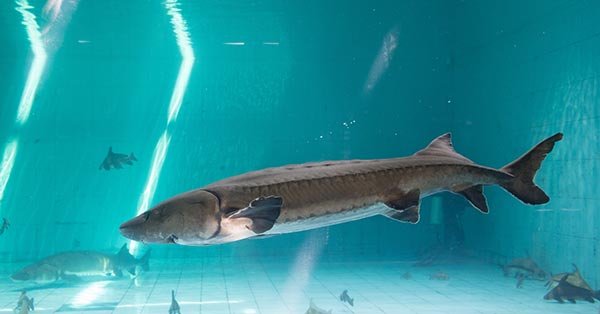 |
|
The clinic at the Shanghai Yangtze River Estuary's Chinese Sturgeon Nature Conservation Area is dedicated to protecting and giving treatment to injured giant fish. [Photo provided to China Daily] |
The clinic that Liu Jian manages on Chongming island northeast of downtown Shanghai is unlike any you will ever have seen. It is quiet, spacious, and empty-and indeed is desperately keen to have patients.
The clinic, covering 55,900 square meters and built in 2014, is officially named the Shanghai Yangtze River Estuary's Chinese Sturgeon Nature Conservation Area, dedicated to the giant fish believed to have existed for more than 140 million years since the age of dinosaurs.
The fish, known in Chinese as the Zhong Hua Xun or submarine panda, is 2 to 5 meters when it is fully grown, and is native to China. It mostly lives along the Yangtze River but has been on the brink of extinction for 20 years.
"It would be a gross understatement to say the Chinese sturgeon is at risk," said Liu, director of the administration office of the conversation area.
Liu, who has worked with the fish for almost 20 years, said that while overfishing and river pollution have caused the sharp fall in numbers, it has been discovered that it has stopped reproducing.
Chinese sturgeons spend most of their life at sea but because they migrate to the Yangtze River to reproduce they are regarded as a freshwater species. Dozens of dams have been built on the river since the 1980s and this has put its habitat at risk. In 2013, 32 years after Chinese scientists started to monitor and record the productivity of the fish, it was discovered no wild fish spawned naturally.
"It is as though the entire species has been sterilized," said Liu, in front of banks of sparkling, new medical equipment tailor-made for the sturgeon, all of it thus far unused.
But Liu and his team, as well as the Chongming district government, are not giving up.